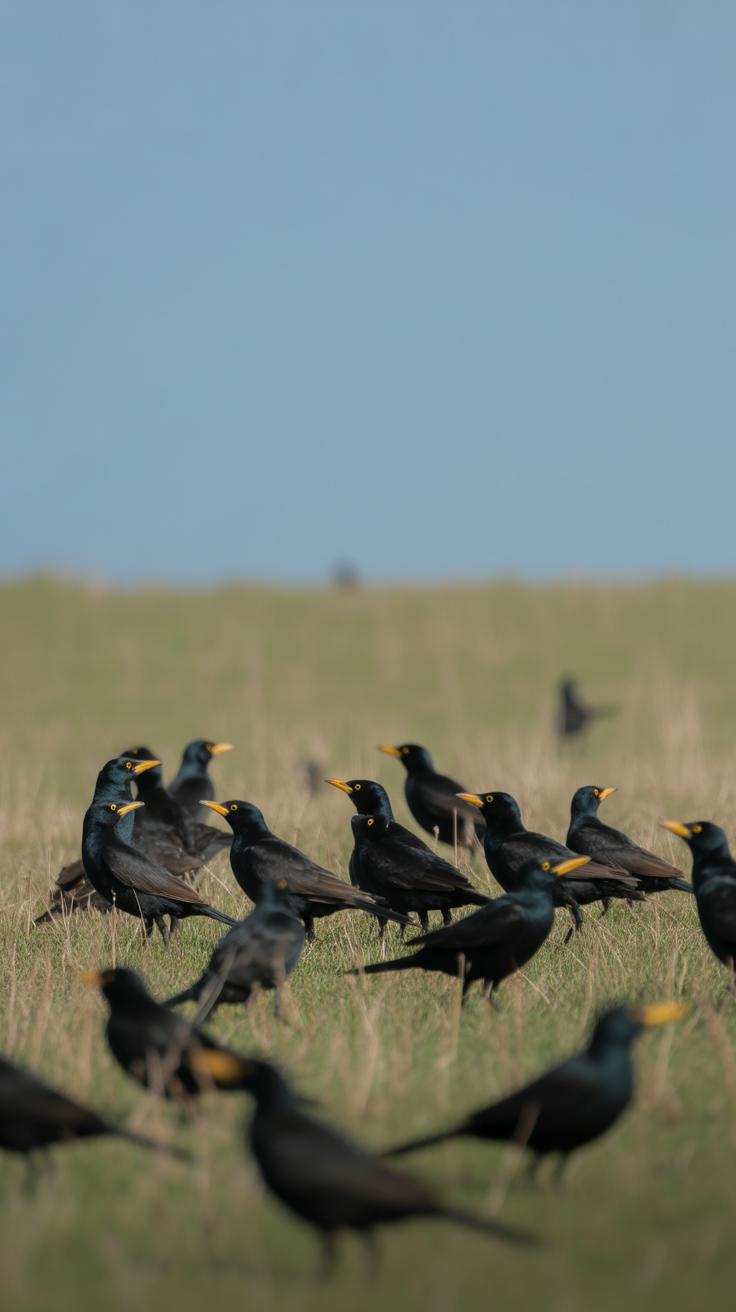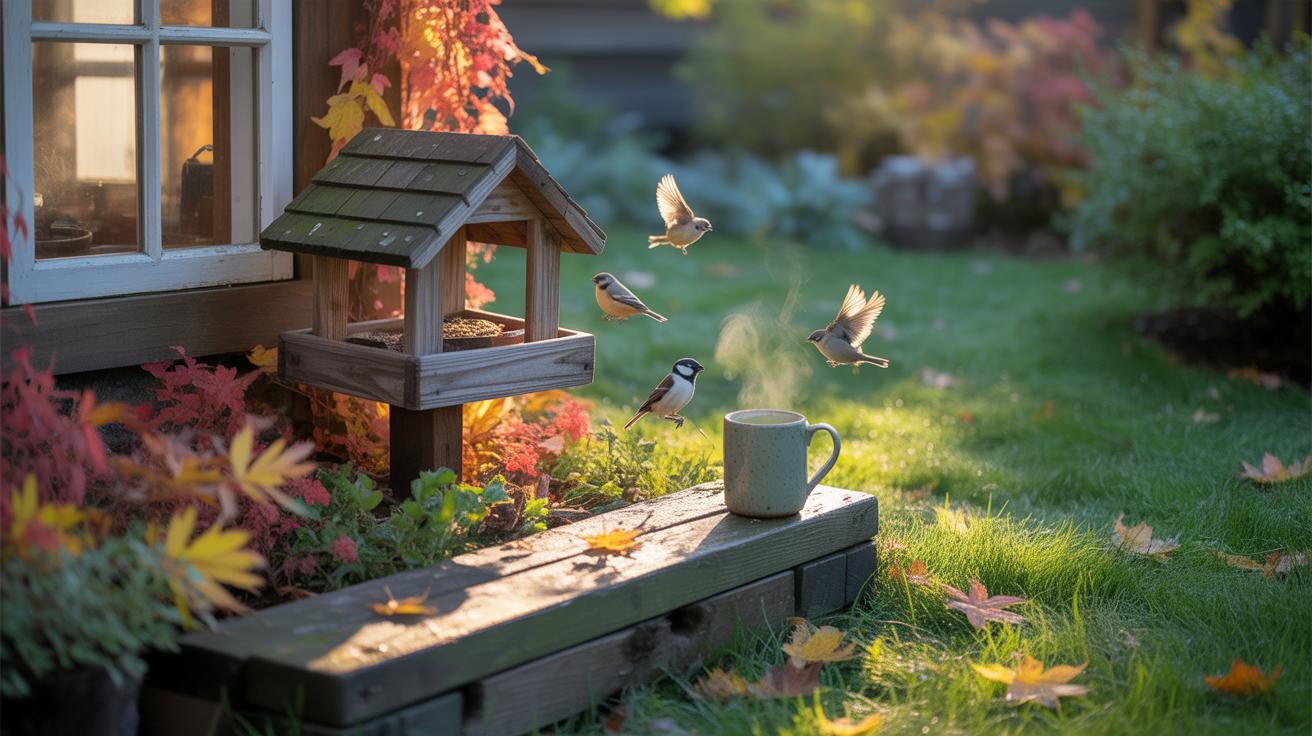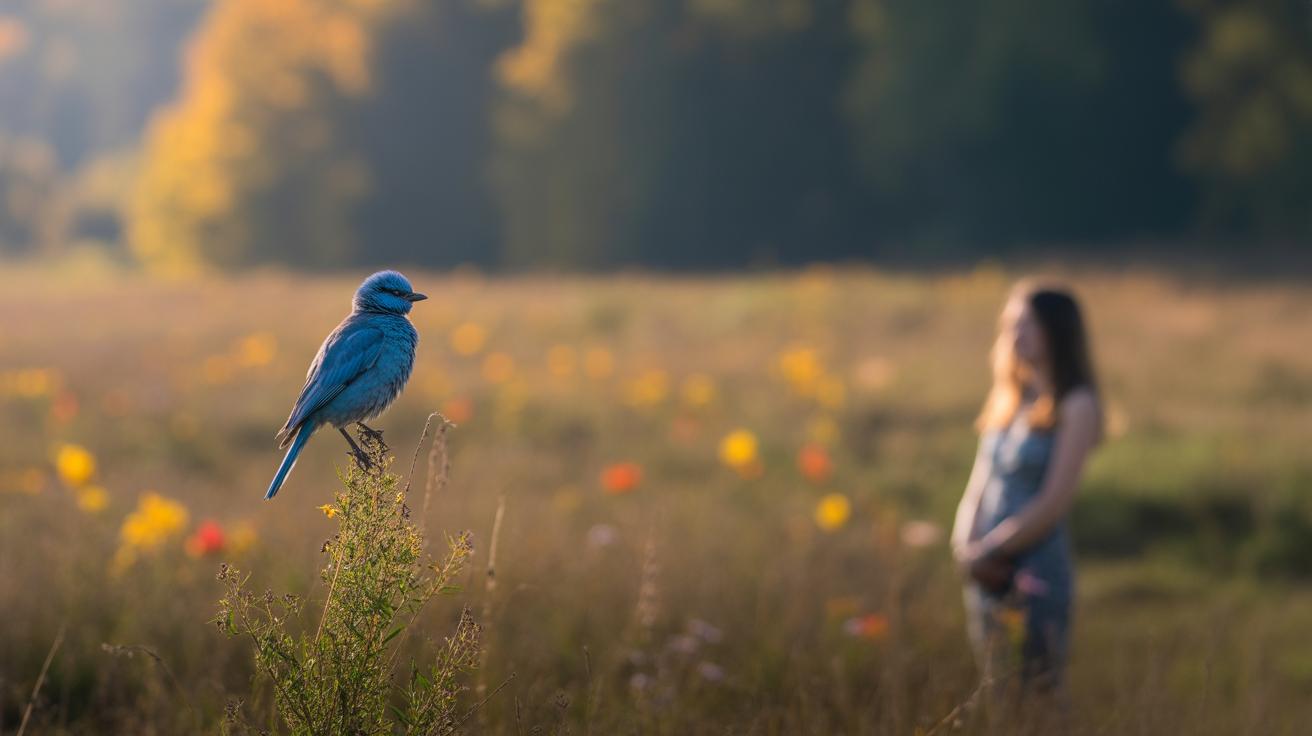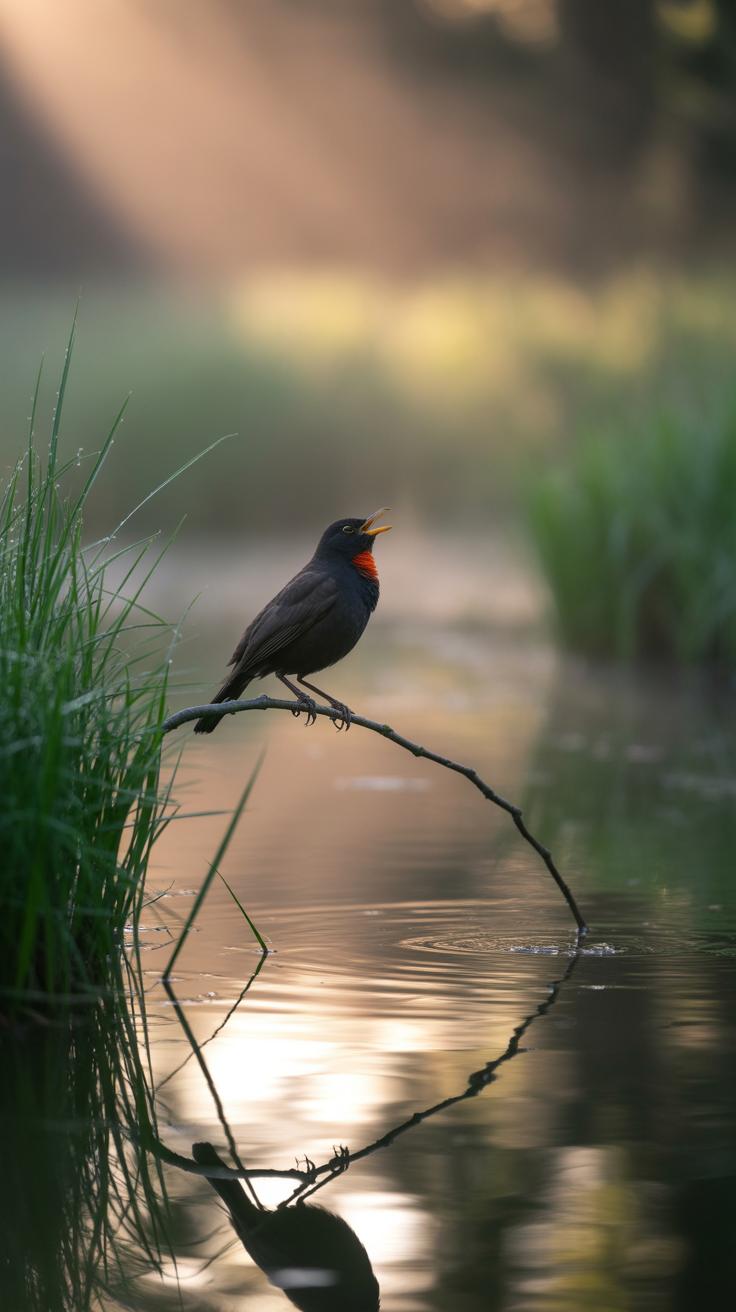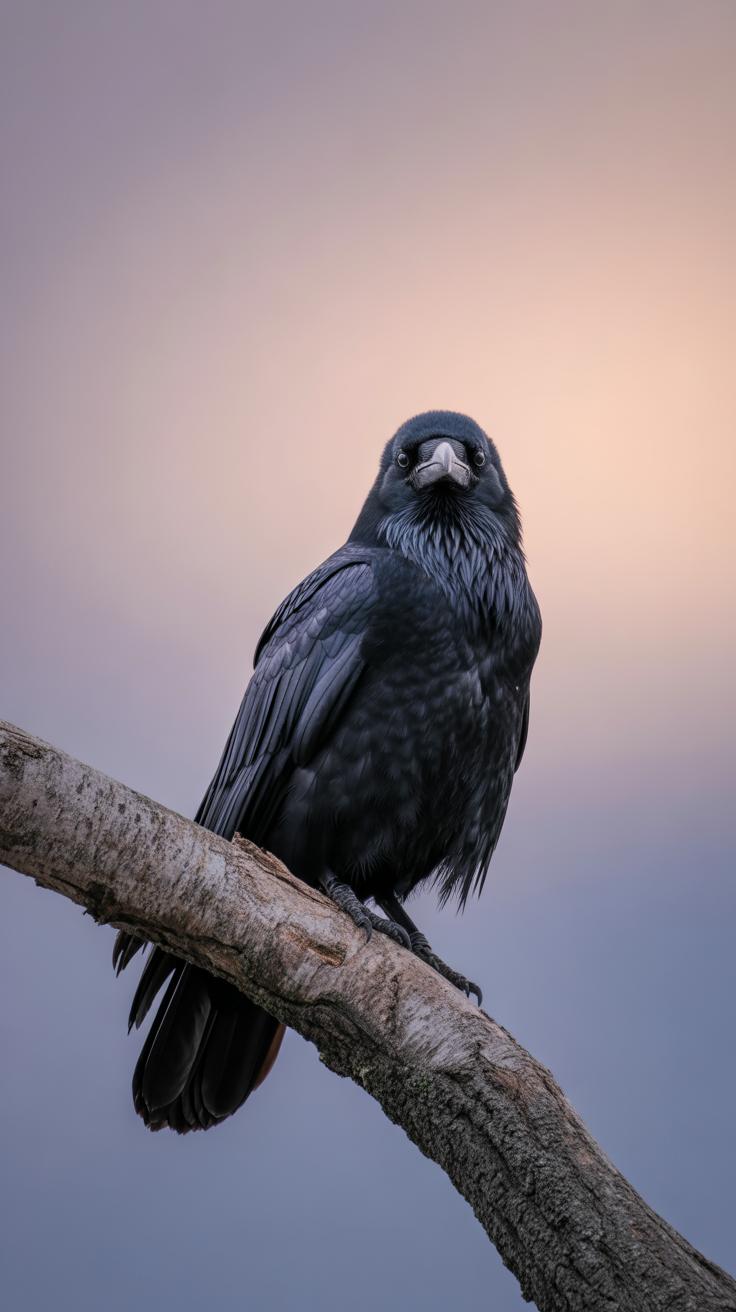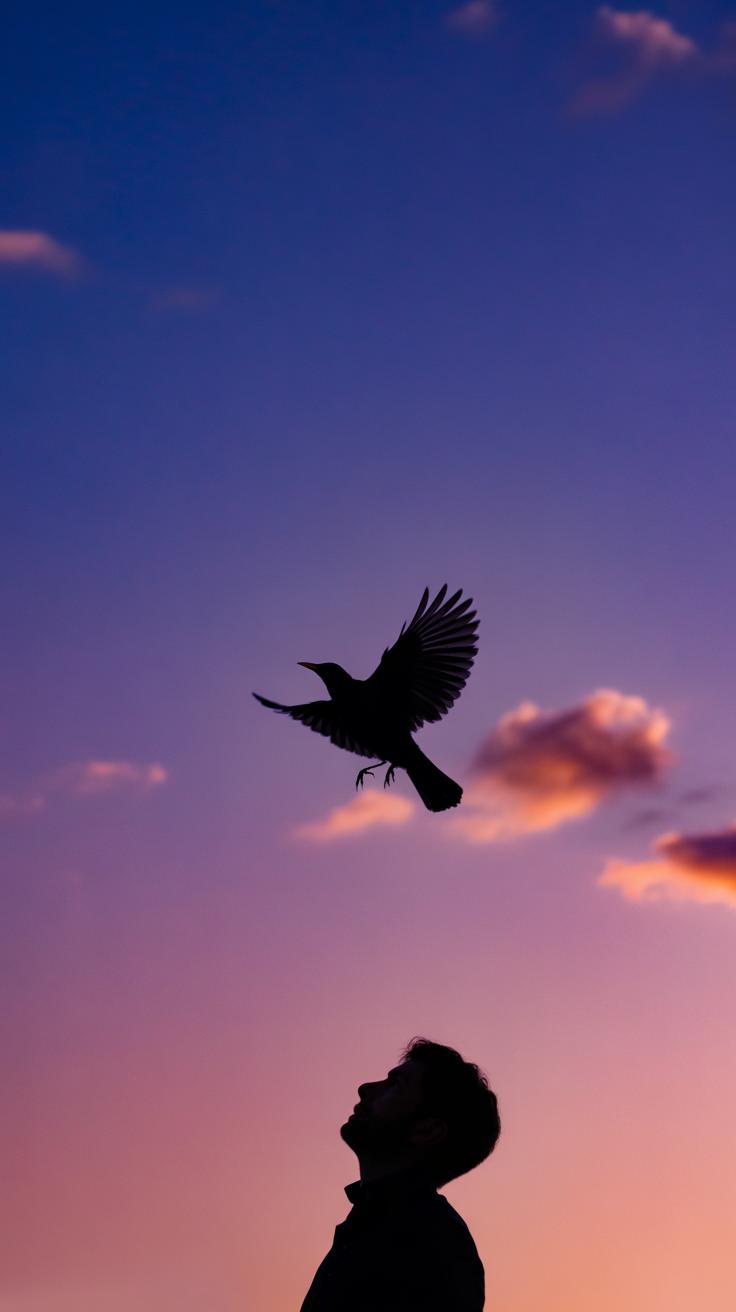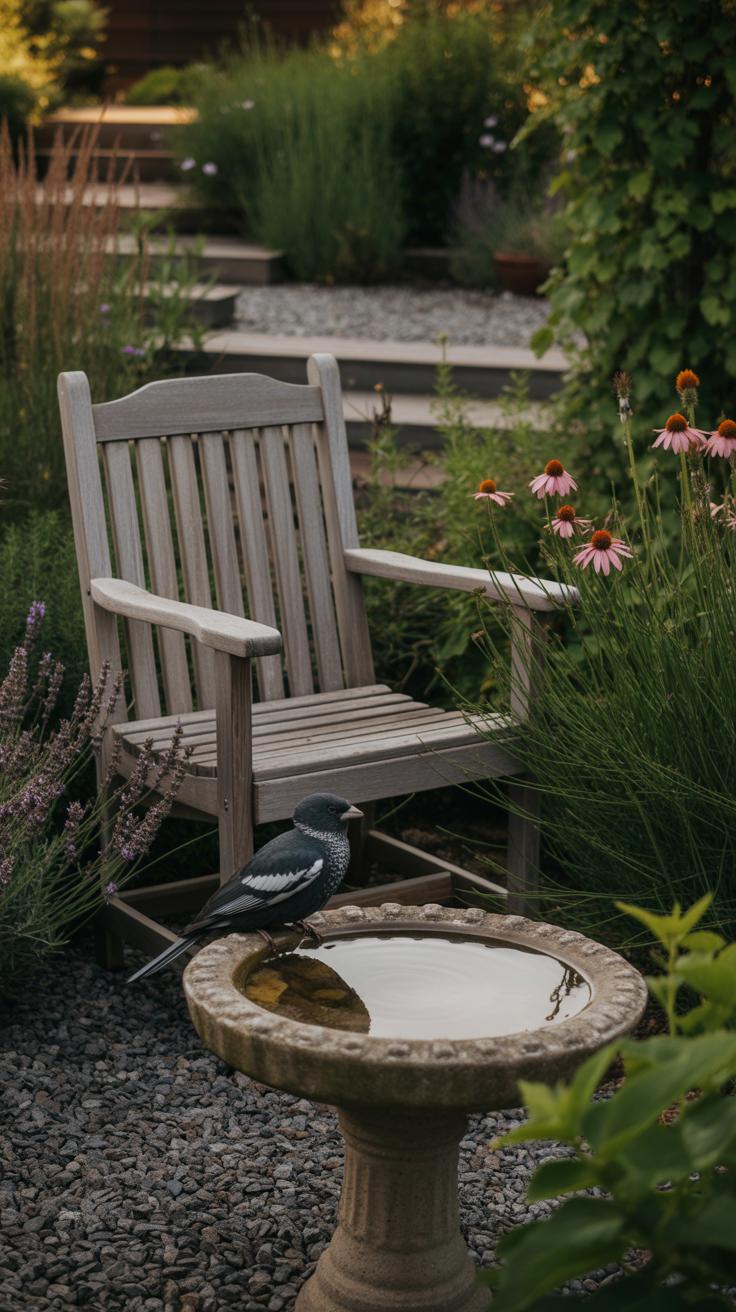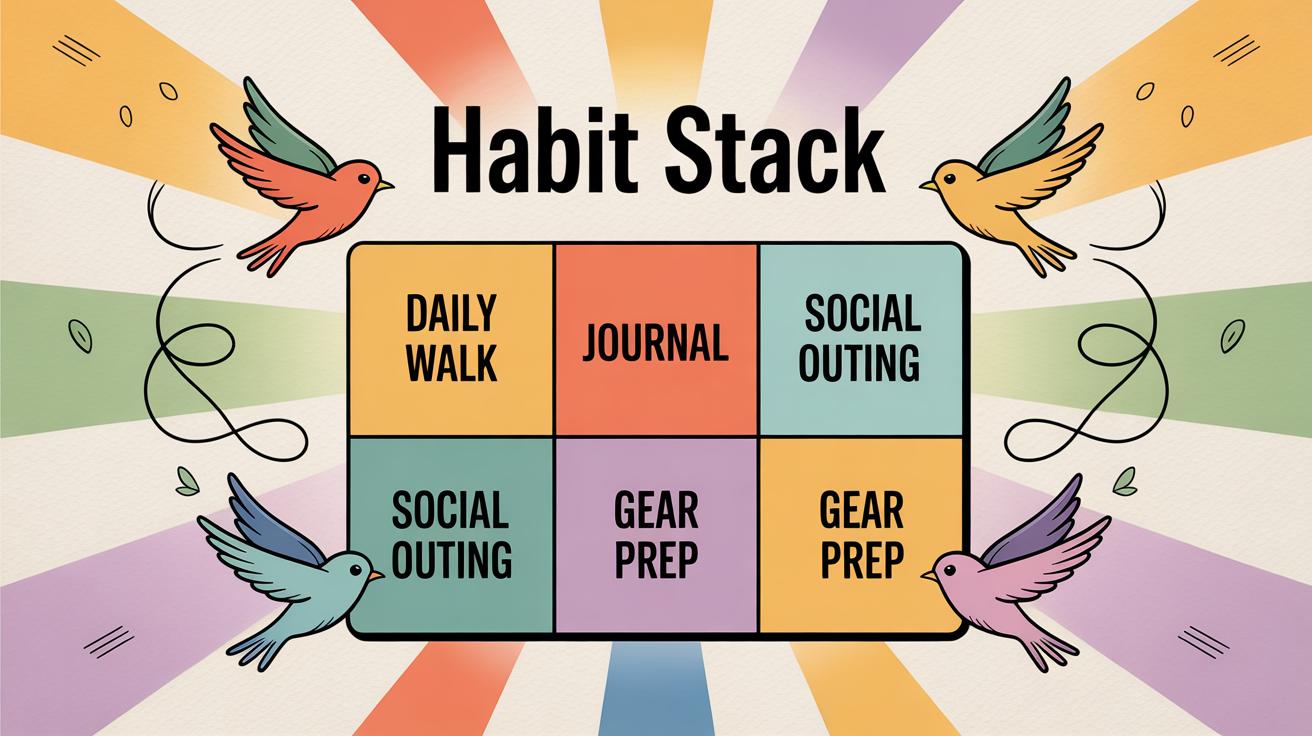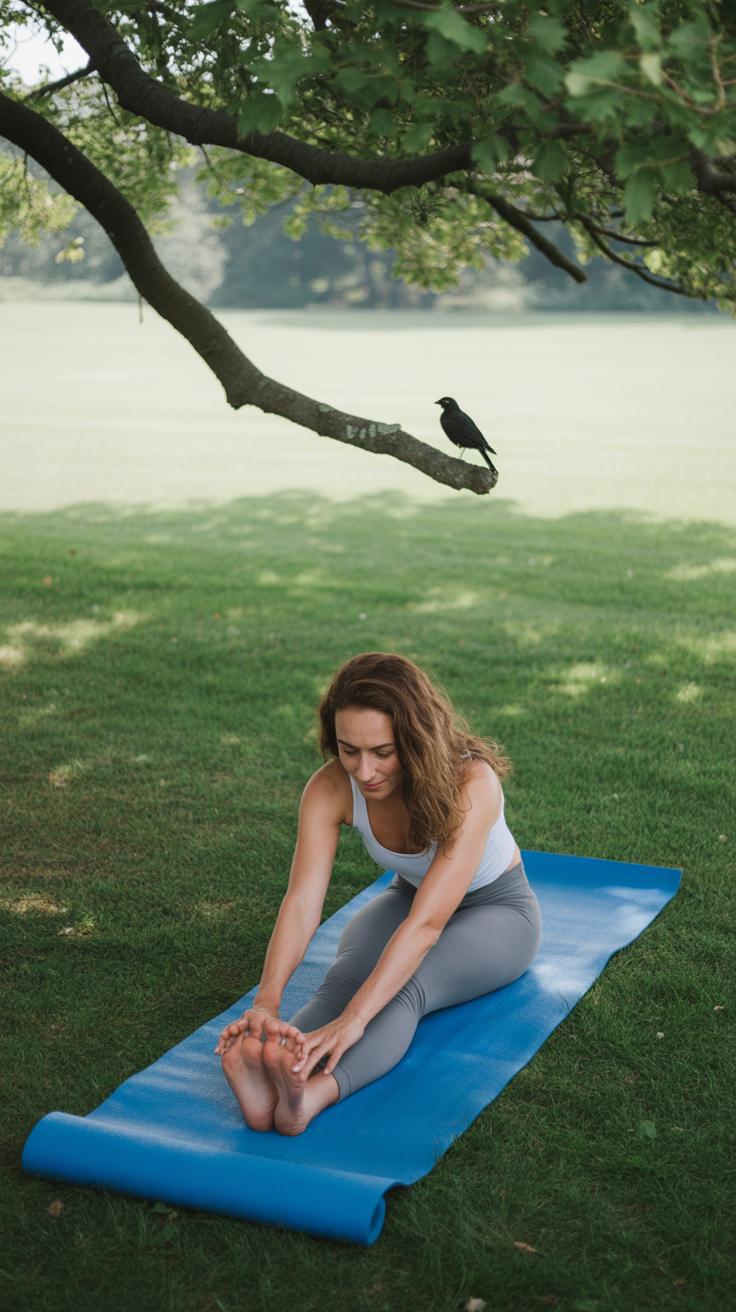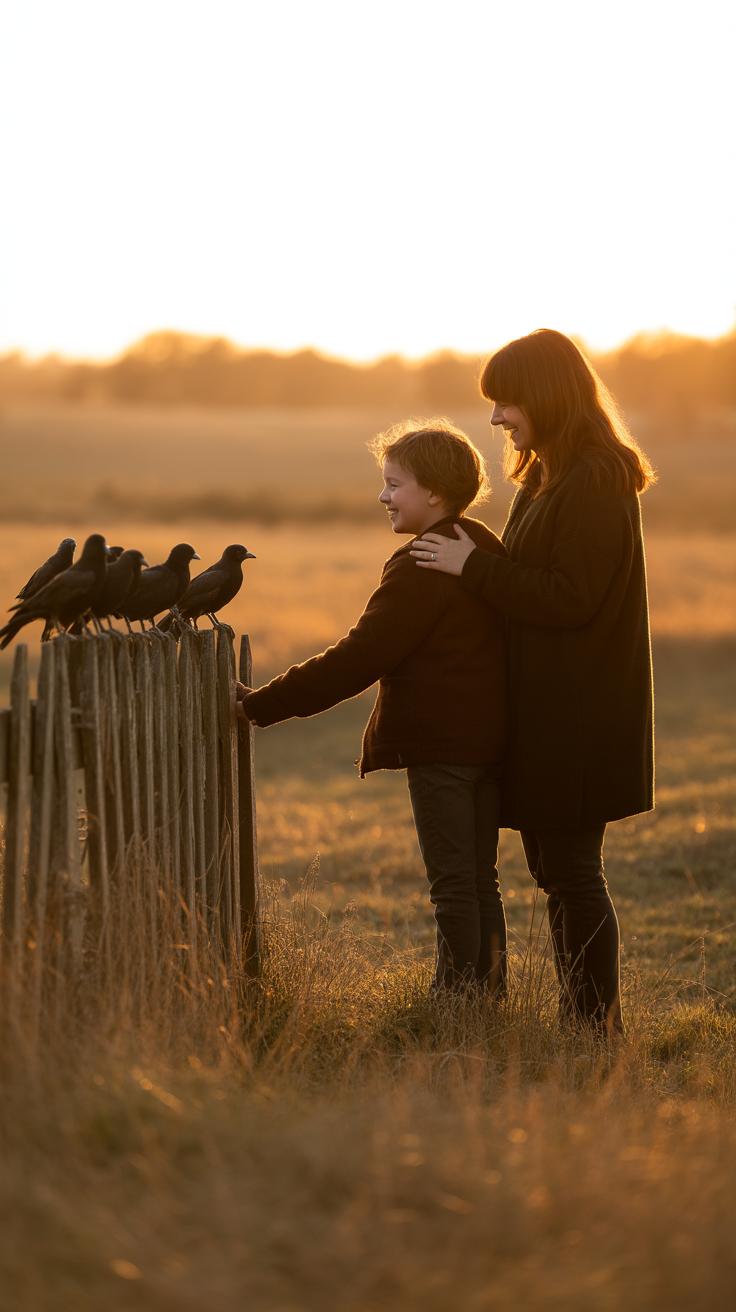Introduction
Black birds have a unique presence in our environment. Their sleek black feathers and distinct calls often catch our attention. Beyond their appearance, these birds are part of a larger ecosystem, and their moments can bring calm and clarity to our busy lives. Black Bird Moments That Soothe Stress And Brighten Mood help us connect with nature and find peace in everyday moments.
In this article, you will learn about black birds and explore various ways their presence can reduce stress and brighten your mood. Through understanding their behaviors and the natural settings where they thrive, you can discover simple practices to enjoy these moments and improve your well-being.
Black Birds in Their Natural Habitat
Black birds show up in a surprising range of places. You might see them in forests where tall trees create dense shade. There, crows and ravens often perch on branches, watching quietly. These wooded areas provide both cover and food, like insects and small animals hidden beneath leaves.
But black birds aren’t just found in wild, remote spots. They are common in cities too. Pigeons get more attention, but crows and blackbirds fit right in, scavenging near parks, streets, and trash bins. It’s a curious sight—birds known for quiet forests adapting well to noisy, crowded urban life.
And parks? Those peaceful green spaces act as mini habitats for black birds. You’ll notice them hopping on lawns or singing from trees. They play a role in cleaning up, eating leftover food or insects, which might seem small but actually helps keep nature balanced around us.
Do you sometimes wonder why these birds are everywhere? Their ability to live in such diverse spots makes you think about their role, not just as wildlife but as part of your own daily surroundings. It’s like they quietly share the space with us, and maybe that’s why watching them calms the mind a bit.
Where Do Black Birds Live
Black birds are surprisingly adaptable creatures. You’ll find them almost everywhere—from thick, shady forests to bustling city streets. In forests, they often nest high in tall trees where they can watch over their territory. Parks and gardens also attract black birds, offering a mix of trees, shrubs, and open spaces. Urban areas may seem unlikely homes, but black birds adjust well to cities, taking advantage of human structures for nesting and feeding.
They don’t just survive; they often thrive in places that might seem hostile to wildlife. Maybe it’s their curious nature or the flexibility in their diet. For example, in a city, a blackbird might snack on discarded food, while in a forest, they’ll hunt insects or fruit. This ability to shift their behavior according to their surroundings makes their presence quite persistent—and if you’ve ever paused to watch one, you might notice how comfortable they look, even amidst concrete and noise.
The Role of Black Birds in Nature
Black birds do more than just exist; they quietly support their ecosystems. They help control insect populations by feasting on bugs and larvae that might harm plants or spread disease. Their appetite can be quite useful, especially in agricultural or garden areas. Also, some black birds play a part in spreading seeds, thereby aiding plant growth and diversity.
Think about it: every time a blackbird carries a berry to another place, it’s unintentionally planting future life. This simple act can influence the makeup of a forest or park over time. They are part of the natural cycle, often overlooked but still vital. It makes you wonder how many everyday black birds distribute seeds and keep insect numbers in check without us paying much attention.
The Sounds of Black Birds That Calm
Understanding Black Bird Calls
Black birds, like crows and grackles, are often known for their cawing—a sound that some find jarring at first. But there’s more variety in their calls than you might expect. They produce sharp caws that can signal warning or alert, but also softer, almost musical notes used during social interactions. Sometimes, you might even catch their low, almost whispered rattles or clicks, which usually mean they’re relaxed or communicating quietly with their flock.
Listening closely, you’ll notice differences depending on the context. For example, when defending territory, the caw is loud and repetitive, but during calm moments, their sounds soften, turning into a series of varied calls that resemble a loose kind of singing. It might be subtle, easy to overlook if you’re not paying attention, but these subtler sounds play a big role in the bird’s social life.
How Bird Sounds Influence Your Mood
There’s something in those black bird calls that can ease the mind. At first, the caw sounds might seem harsh—maybe even stressful if you’re not used to them. But when you start listening to the softer, more rhythmic parts of their vocal repertoire, these sounds have a steadying effect. I’ve noticed that hearing a black bird’s song during a quiet morning walk sometimes interrupts anxious thoughts without me really trying.
Why does this happen? Possibly, it’s the simple rhythm and natural unpredictability in their sounds that help distract your brain from stress. Their calls aren’t uniform or mechanical; they carry a certain liveliness and spontaneity that can make your mind focus on the present rather than what’s worrying you. So next time you hear their calls, try tuning in carefully—it might surprise you how calming they can be.
Watching Black Birds and Relaxation
Simple Ways to Observe Black Birds
Watching black birds can be surprisingly easy, and you don’t need fancy equipment to start. Simply find a quiet spot—maybe a park bench or a window with a good view of trees—and wait. Early morning or late afternoon often brings the most activity. Black birds, like crows or ravens, often perch on rooftops or gather on power lines, offering plenty of moments to observe their movement and behavior.
You might want to bring a notebook or just keep your phone handy to jot down what you notice. Sometimes, staying still and patient is tricky, but even brief moments of focused watching can help. I find it helpful to shift my attention slowly between their actions—how one hops, how another surveys the area—without rushing to understand everything.
Relaxation Benefits from Bird Watching
Focusing on black birds can slowly clear the clutter in your mind. When you watch their smooth, deliberate motions, your thoughts often quiet down on their own. It’s not always instant, and sometimes your brain will wander, but if you return your gaze calmly, the repetitive nature of their routines can anchor your attention.
This quiet focus reduces anxiety—not by distracting you, exactly, but by gently pulling your mind out of stressful loops. Watching a black bird preen or interact with others sometimes brings a sense of simple presence that’s hard to find in busy moments. It’s something small, maybe subtle, but enough to remind you that some things unfold naturally, without pressure.
Using Black Bird Moments for Mindfulness
What is Mindfulness
Mindfulness is simply paying attention to the present moment without getting caught up in judgments or distractions. It sounds simple but can be surprisingly hard to do, especially when your mind tends to race or wander. The idea is to notice what’s happening around and inside you—thoughts, feelings, sights—without trying to change anything.
Practicing mindfulness often helps reduce stress and improve mental clarity. It lets you step back from worries and stop replaying past or future concerns. I’ve noticed even brief moments of mindfulness can calm anxiety, if only for a little while. There’s something grounding about focusing fully on ‘right now’—it breaks the cycle of overthinking.
How Black Birds Help You Stay Present
Watching black birds offers a natural way to practice mindfulness because they’re intriguing yet uncomplicated subjects. When you observe a black bird, you can focus on its movements, the rhythm of its wings, how it tilts its head, or even the sounds it makes. This attention slows your thoughts because your brain takes in these small details.
It’s not just about looking. It’s about *being* with the bird in that moment. Maybe the bird hops around, or preens its feathers. You might find yourself caught up in wondering what it’s doing—or just appreciating the quiet motion. Either way, it keeps you tethered to the present instead of drifting elsewhere.
If your mind starts to wander—as it tends to—just gently bring it back to the bird. The simple act of refocusing becomes a kind of mini exercise for your attention. Over time, this can improve your ability to stay present even when the black bird isn’t there.
Have you ever noticed how something so ordinary can pull you out of a stressful thought loop? Black birds, with their calm yet lively presence, might be unexpectedly helpful companions for everyday mindfulness. You don’t need a lot of time or special tools—just your eyes and a moment of quiet.
Black Birds and Their Symbolism
Black birds often stir a mix of feelings and ideas. For some, they symbolize mystery or the unknown, which can be unsettling. Others might see them as messengers or wise creatures, offering a quiet presence that prompts reflection. It’s interesting how these birds provoke thought—sometimes quietly calming you, sometimes nudging you to think deeper. When you notice a black bird, do you feel a sense of pause? Like it’s holding space for something important, even if you’re not sure what?
People have linked black birds with transformation, change, and the cycles of life. This can influence your mood by reminding you that difficult times, like night, eventually give way to light—a slow but sure process. At the same time, some might find their dark color a little heavy, stirring thoughts of endings or loss. It’s not straightforward, which kind of makes them all the more compelling to watch.
Black Birds in Different Cultures
In many cultures, black birds carry symbolic stories that range widely. For example:
- In Native American traditions, crows and ravens often appear as clever tricksters or creators, blending humor with wisdom.
- In Japanese culture, a black crow is sometimes viewed as a protective spirit, guiding people and warding off harm.
- On the other hand, some European folklore associates black birds with omens—but even those stories vary, sometimes pointing to change rather than pure bad luck.
These cultural views show how black birds can hold complex meanings. They aren’t just one thing—they shift depending on the story you carry with you. In a way, learning about these beliefs can open your mind to new ways of feeling calm or curious when you see a black bird.
Positive Meanings to Inspire You
Despite their sometimes serious reputation, black birds can inspire surprisingly positive thoughts. They remind us that not everything has to be bright and flashy to bring comfort. Their steady presence can feel grounding. Many people find hope in this—like a reassurance that darkness isn’t empty or scary but full of quiet power.
Some positive ideas to hold onto:
- Black birds symbolize adaptability. They thrive in many environments, which can suggest resilience when life feels tough.
- They are associated with intelligence and problem-solving, encouraging you to trust your own resourcefulness.
- You might see them as guardians of the present moment—reminding you to accept what is, rather than what you wish for.
Maybe next time you spot a black bird, consider what it might quietly be telling you about strength or patience. It’s a small, simple source of calm, if you’re willing to listen.
How to Create Your Own Black Bird Moments
Finding Time for Black Bird Watching
It might seem tricky to make time for watching black birds when your days are packed. Still, even a few minutes can matter. Try stepping outside during a coffee break or waiting by a window in the morning. These small pockets of time can become regular pauses if you let them. Sometimes, shifting your routine slightly helps—maybe a five-minute walk before work or after dinner where you keep an eye out for black birds.
Think about when you’re naturally still or in between tasks—that moment could be ripe for birdwatching. You don’t need fancy equipment; even a glance outside counts. Does noticing one black bird change your mood just a bit? If yes, maybe it’s worth making time, even if it’s just fleeting moments.
Making the Most of Your Observations
Once you find those moments, how do you deepen the experience? You could try journaling—write a few lines about what you saw or felt. Sometimes, just naming what you notice helps the calm settle in. Or keep it simple: sit quietly, watch the bird’s movements, listen for calls. Let your mind wander there, just for a while.
Sometimes, you might feel restless but try staying present anyway. It’s okay if your attention drifts; gently bring it back to the bird. Those small efforts can develop into a soothing habit. You might even wonder what the birds’ presence means to you personally—does it bring comfort, curiosity, or something else?
Combining Black Bird Moments with Other Relaxation Techniques
Watching black birds can be calming on its own, but pairing these moments with simple relaxation techniques can deepen your experience. For example, while sitting quietly observing a blackbird perched nearby, you might try focusing on your breath. It’s easy to forget how powerful just slowing down your breathing can be.
Deep breathing helps calm your nervous system and brings your attention fully to the present moment—the blackbird’s subtle movements, the soft rustling of leaves. You don’t need to make it complicated; just notice the rise and fall of your chest. It feels—well, almost meditative.
Stretching, meanwhile, keeps your body comfortable and relaxed so you’re not distracted by stiffness as you watch. A gentle neck stretch or rolling your shoulders can feel surprisingly soothing, especially after sitting still for a few minutes. Try combining these stretches with your birdwatching pauses, moving slowly enough to take in the natural surroundings.
Simple Breathing Exercises to Try
One easy exercise to start with is the 4-4-4 pattern. Breathe in quietly for a count of four, hold for four, then breathe out for four. Repeat a few times and notice if your heartbeat feels slower or your mind quieter. You might even find yourself syncing this rhythm with the blackbird’s calm wingbeats or soft calls.
If that feels too structured, try something even simpler: inhale deeply and naturally through your nose, then exhale fully through your mouth without forcing it. Just being mindful of your breath as you watch can shift your mood in subtle ways. It’s surprising how often we overlook this basic tool.
Stretching Ideas to Enhance Relaxation
Try a few basic stretches that don’t pull you away from the moment. You could slowly tilt your head from side to side to relieve neck tension or slowly roll your shoulders backward to open up your chest—the kind of stretch that might make you sigh quietly.
Another gentle move is standing tall and raising your arms overhead as you take a deep breath, then lowering them slowly on the exhale. You might catch a blackbird’s watchful gaze or flutter as you gently stretch, creating a quiet connection between your body and the scene before you.
These subtle movements don’t interrupt the peaceful black bird moment but add comfort and ease, making your time outside feel not only mentally soothing but physically gentle. It’s worth trying to blend these simple actions with your bird-watching routine. You may find it lifts your calm more than you expect.
Sharing Black Bird Moments with Others
Watching black birds can feel quietly comforting on your own, but sharing that experience with others can add a different dimension. When you invite friends or family to observe these birds with you, it’s not just about the birds anymore. It becomes a shared pause from daily stress—a chance to connect over something simple and peaceful.
There’s something about looking at the same small details—the birds’ movements, their calls—that can spark conversation or just a comfortable silence. You might notice how someone’s mood shifts or a smile appears unexpectedly. It’s subtle, but these tiny moments definitely build a sense of togetherness.
Benefits of Sharing Nature Moments
Spending time with others in nature, even if it’s just to watch a few black birds, can strengthen bonds. You don’t need big gestures; it’s the quiet presence that counts. When people share this kind of calm, they often feel closer afterwards. Some studies suggest that shared nature experiences can boost happiness, easing worries in a way that talking through problems alone might not.
Maybe it’s because you’re both stepping out of the usual routine, or just because the birds draw your attention away from screens and schedules. Either way, these shared moments offer something a bit different than typical social time, often leaving you with a lingering sense of calm and connection.
Ideas for Group Black Bird Activities
If you want to try this yourself, here are a few easy ideas you could use:
- Plan a casual walk where everyone keeps an eye out for black birds, sharing quiet observations along the way.
- Bring simple notebooks to jot down or sketch what everyone notices—sometimes focusing on details sparks fun stories or memories.
- Try a short bird call imitation contest or listen closely to identify different bird sounds together. It makes the experience playful, not just observational.
- End with a shared moment sitting quietly, just watching the birds without talking. It can feel surprisingly restorative.
Sharing these experiences isn’t about how many birds you see or how much you know about them. Instead, it’s about presence—being there together—and letting something small like black birds brighten your day. Have you ever tried this? It might feel a little awkward at first, but it often opens a door to simple, shared relief from stress.
Conclusions
Black birds offer more than just a view in the natural world. Their moments remind us to pause and breathe. Observing their calm movements and listening to their sounds can help you step away from stress and embrace peace.
By making time to notice black birds, you can bring small but meaningful moments of joy and calm into your day. These encounters encourage mindfulness and connect you with the world around you. Embrace Black Bird Moments as part of your daily routine to help brighten your mood and soothe stress.


